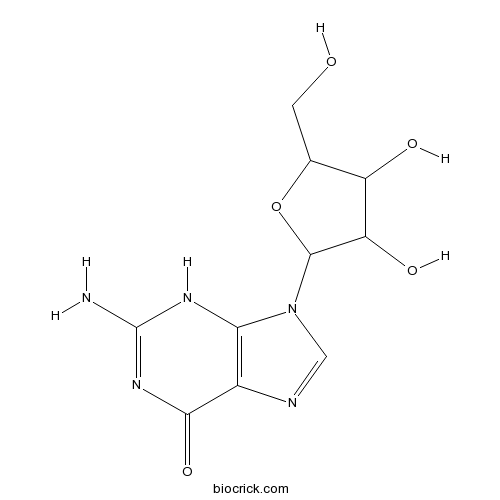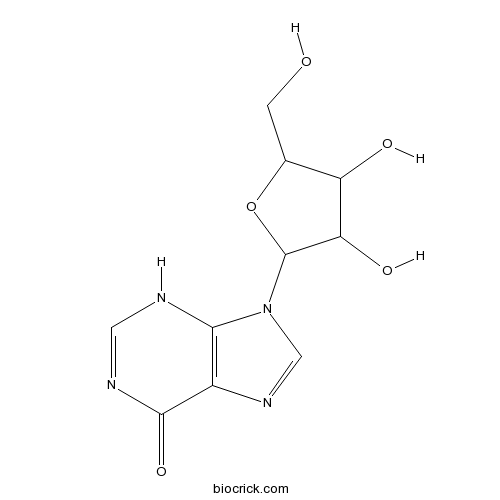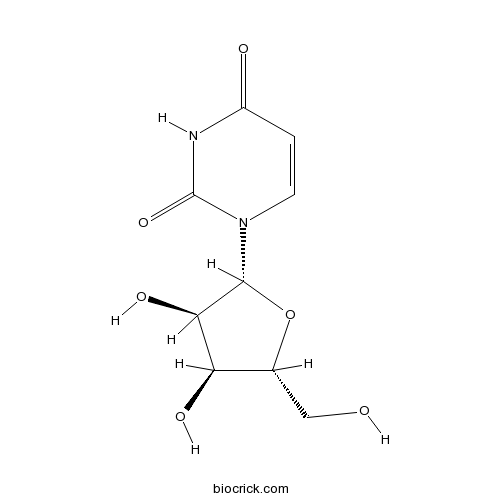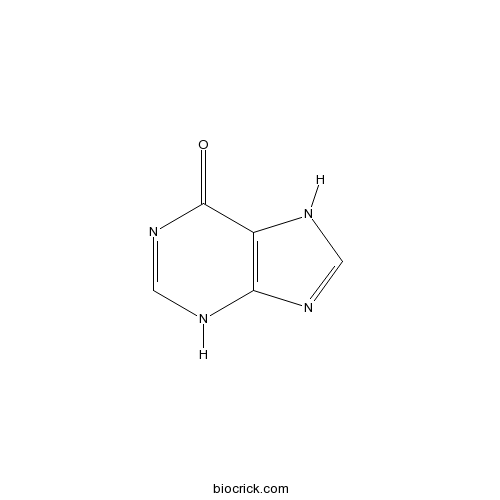Cordyceps militaris
Cordyceps militaris
1. The products in our compound library are selected from thousands of unique natural products; 2. It has the characteristics of diverse structure, diverse sources and wide coverage of activities; 3. Provide information on the activity of products from major journals, patents and research reports around the world, providing theoretical direction and research basis for further research and screening; 4. Free combination according to the type, source, target and disease of natural product; 5. The compound powder is placed in a covered tube and then discharged into a 10 x 10 cryostat; 6. Transport in ice pack or dry ice pack. Please store it at -20 °C as soon as possible after receiving the product, and use it as soon as possible after opening.
Natural products/compounds from Cordyceps militaris
- Cat.No. Product Name CAS Number COA
-
BCN2962
Guanosine118-00-3
Instructions

-
BCN5796
Adenosine58-61-7
Instructions

-
BCN3841
Inosine58-63-9
Instructions

-
BCN4090
Uridine58-96-8
Instructions

-
BCC5324
Hypoxanthine68-94-0
Instructions

-
BCN5389
Cordycepin73-03-0
Instructions

Enhancing cordycepin production in liquid static cultivation of Cordyceps militaris by adding vegetable oils as the secondary carbon source.[Pubmed: 30071414]
This study evaluated different vegetable oils as the second carbon source in liquid static culture of Cordyceps militaris in terms of mycelial growth and cordycepin production. The maximum mycelial concentration and cordycepin production were observed under cottonseed oil and peanut oil induction, respectively. In the condition of adding 20 g/L of peanut oil at Day 0, the final concentration of cordycepin reached to the highest, about 5.29 g/L, which was about 3.17 times higher than that of the control. The qRT-PCR and enzyme activity analysis confirmed that addition of peanut oil up-regulated the expression of the genes encoding glucose-6-phosphate dehydrogenase and isocitrate lyase, as well as the genes in the cordycepin biosynthesis pathway, cns1 and cns2, during the cultivation in C. militaris.
Regulatory effects of chrysophanol, a bioactive compound of AST2017-01 in a mouse model of 2,4-dinitrofluorobenzene-induced atopic dermatitis.[Pubmed: 30025384]
The aim of this study is to determine whether AST2017-01 which consists of Rumex crispus and Cordyceps militaris would improve atopic dermatitis (AD). We analyzed anti-AD effects of AST2017-01 and chrysophanol, a bioactive compound of AST2017-01, using a 2,4-dinitrofluorobenzene-induced AD murine model. AST2017-01 and chrysophanol relieved clinical severity in AD-like skin lesions and significantly decreased scratching behavior. The thickness of epidermis and infiltration of inflammatory cells in AD-like skin lesions were reduced by AST2017-01 or chrysophanol. AST2017-01 and chrysophanol significantly suppressed the levels of histamine, immunoglobulin E, thymic stromal lymphopoietin (TSLP), interleukin (IL)-4, IL-6, and tumor necrosis factor-α in serum of AD mice. The protein levels of TSLP, intercellular adhesion molecule-1, and macrophage inflammatory protein 2 were significantly inhibited in the skin lesions. The mRNA expressions of TSLP, thymus and activation-regulated chemokine/CCL17, and C-C chemokine receptor 3 were inhibited in the skin lesions by AST2017-01 or chrysophanol. In addition, AST2017-01 and chrysophanol significantly suppressed the expressions and activities of caspase-1 in the skin lesions. Taken together, these results suggest that AST2017-01 has beneficial effects on AD and may be used as a health functional food in AD.


